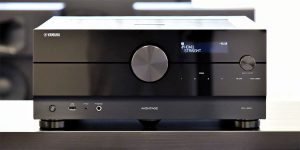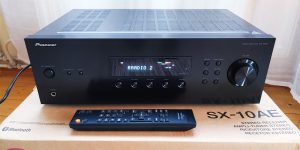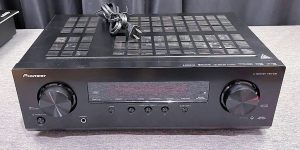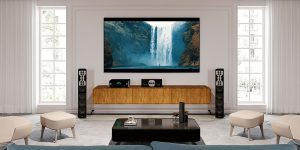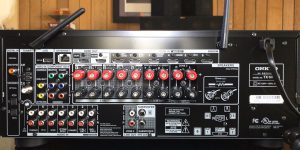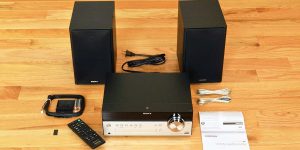The Marantz vs. Onkyo confrontation in the receiver production field may not be too obvious because comparing both brands with Denon is more common. Marantz produces more expensive models than similar ones from other manufacturers. And it will be all the more interesting to see what Onkyo offers in return. I have chosen the greatest receivers in different price segments and noted the main differences, and I hope this will make your choice easier. Nevertheless, it is worth stipulating at the very beginning that both brands are popular among users and have a long history, confirming their quality and knowledge of sound. That’s where we’ll start. Let’s go.
Brief history of Marantz
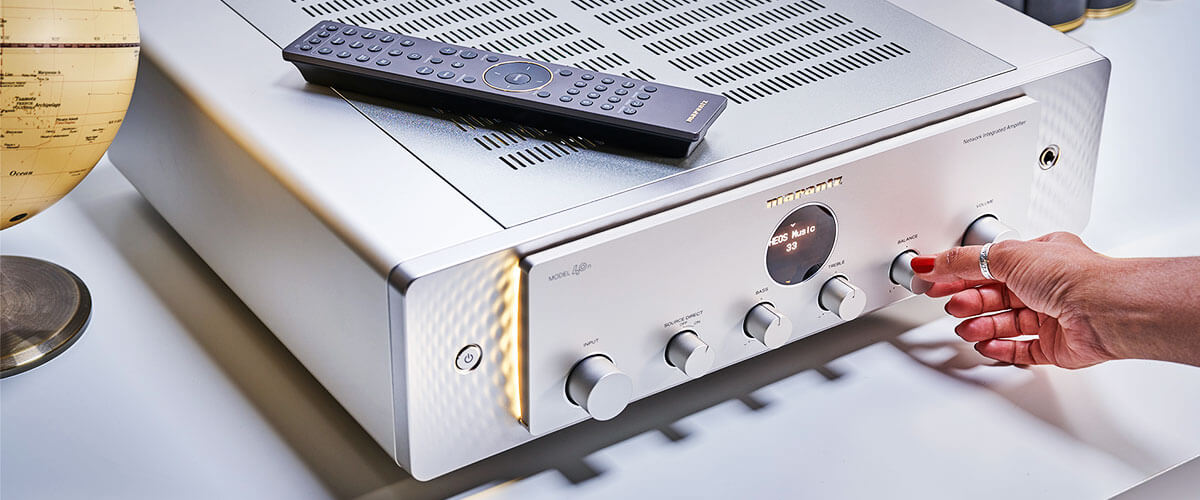
The Marantz story goes back to 1956 when Saul Bernard Marantz introduced the world to his Audio Consolette amplifier assembled on his kitchen table. Inspired by a wife who believed in him, the amateur musician opened a factory in Woodside, Queens, New York, and a company of his own name a year later. The brand gained momentum and experimented with products: in 1980, the company released one of the first CD players, pioneered the introduction of surround sound in the 2000s, and in 2023, it celebrated its 70th anniversary.
To this day, Marantz receivers are still considered to sound better with vinyl, preserving the warmth and authenticity of records. It is also today the most elite brand, guaranteeing the quality of every component and, as a result, durability and longevity.
If you want to learn more about Marantz, just follow this link.
Brief history of Onkyo
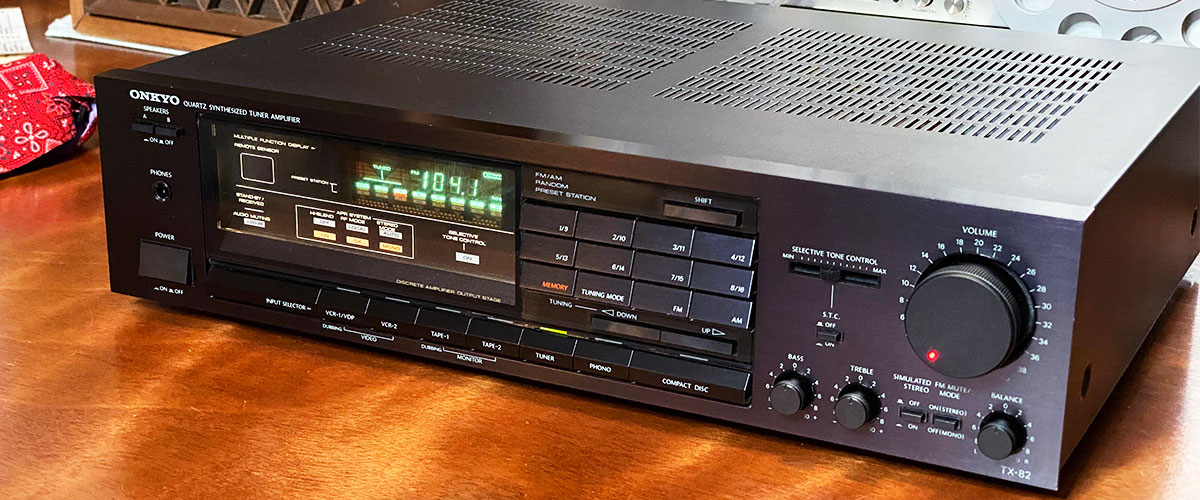
A little earlier, in 1946, in Osaka, Japan, Takeshi Godai started manufacturing vinyl turntables and tonearms, founding the company Onkyo (translated as “acoustics of sound”). Not surprisingly, Takeshi also later went into amplifier manufacturing, a logical step in the era of vinyl’s popularity. So, for more than 75 years, Onkyo has been delighting us with products of good quality and affordability so that each of you can touch the world of surround sound.
You will be interested to know that in 2015, Onkyo joined its resources with the manufacturer Pioneer. And what preceded this and what led to it; you will learn by following the link and familiarizing yourself with the brand’s history in more detail.
General sound differences between Marantz and Onkyo receivers
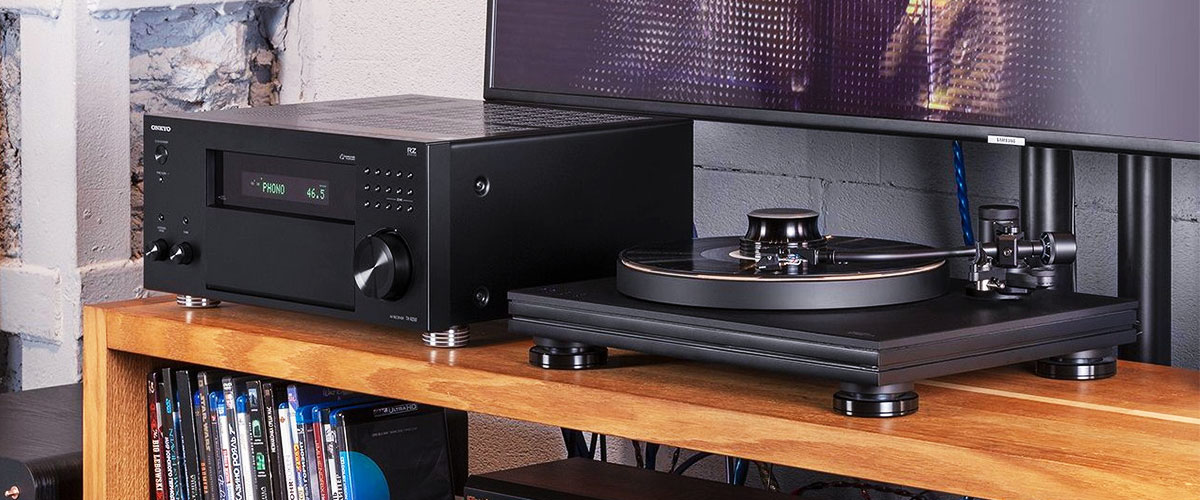
There is a general rule that the sound of receivers of the same price category will be virtually indistinguishable (with proper setup/calibration). Indeed, it is quite difficult to identify any general, pronounced sonic differences between any brands unless there are some unique specifics. Besides, these differences will largely depend on your additional equipment (sound source, speakers, room, etc.).
Nevertheless, comparing receivers, there are 4 important factors to note:
- Marantz receivers use more expensive, higher-quality components, which are more expensive in every category than Onkyo’s alternatives.
- Fans note the warmer, more authentic sound of the Marantz, which is great on vinyl. In comparison, Onkyo’s sound is considered brighter and more full-bodied.
- Some users note that Onkyo receivers lose to Marantz in surround sound and perform better when listening to music, while Marantz is good in both usage scenarios.
- Marantz Audyssey’s room auto-calibration system better adapts to the room than AccuEQ in Onkyo receivers. That said, the new models from Marantz (CINEMA 40, CINEMA 50) and Onkyo (TX-RZ50, TX-NR7100) have the advanced Dirac Live autocalibration system, considered one of the finest today.
The Onkyo vs. Marantz confrontation for you will depend on your personal tastes and preferences, financial capabilities, and requirements for home theater equipment. So, as usual, I recommend that you first understand your goals, study the opinions of third-party users and experts, listen to each of the preferred models if possible, and only then make a purchase. And I offer you my version of rivalry and evaluation.
Our criteria for choosing Onkyo and Marantz receivers for comparison
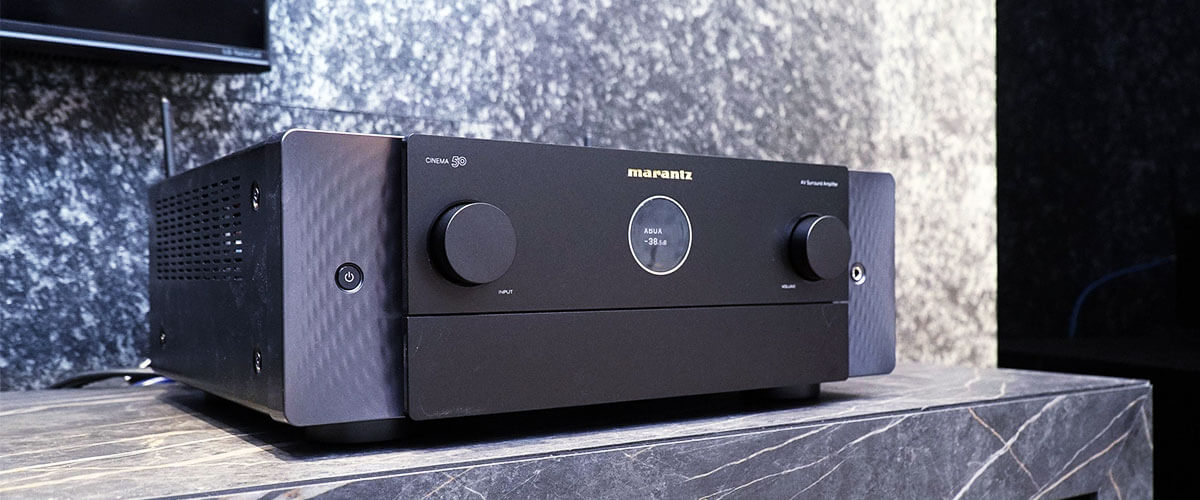
As usual, I tried to choose the most optimal models for different purposes and tasks in different price segments. My criteria for determining the selection were the following factors:
- Listening experience.
- Availability of necessary built-in features (support for modern video technologies, surround sound formats, Bluetooth, Ethernet/Wi-Fi/streaming services, etc.).
- A sufficient number of inputs and outputs.
- Price.
Mid-priced Marantz and Onkyo AVRs comparison
Marantz CINEMA 50 vs. Onkyo TX-RZ50
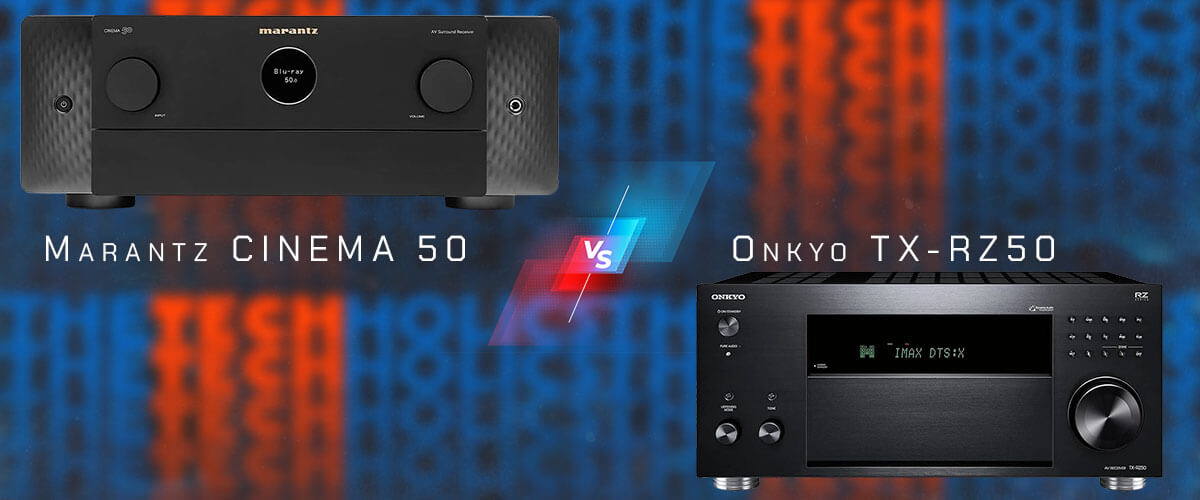
I want to start my comparison review of Marantz vs. Onkyo receivers with two 9-channel models that can be expanded to 11 channels. While you won’t find many differences, they are priced almost $1000 differently, whereas the 2022 Marantz CINEMA 50 is more expensive than the 2021 Onkyo TX-RZ50.
For starters, it’s worth noting that the TX-RZ50 is slightly more powerful (120W vs. 110W), and the Marantz CINEMA 50 can connect 4 independent subwoofers vs 2. You may not notice the difference in power, and bass can be extremely important for systems of this size. With the CINEMA 50, you also get 3 zones, including video for the extra room, while with the TX-RZ50, you only get 2 audio zones.
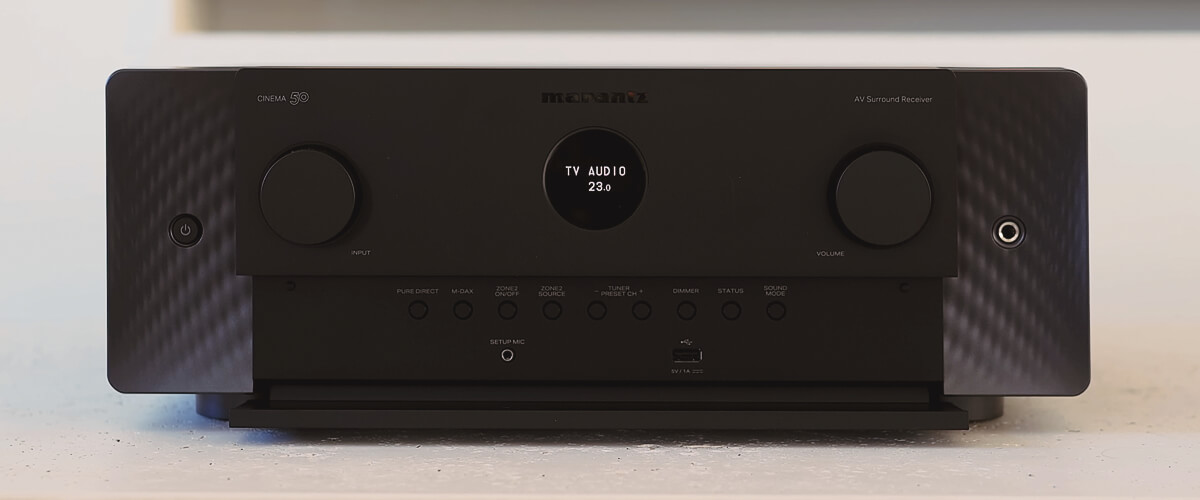
Remember, with Marantz, you always pay more for the parts you can’t see. The components that cause the higher cost are on the inside. For example, the Current Feedback Topology provides Super Audio compliance. The Hyper Dynamic Amplifier Module is superior to conventional DUT ICs. At the same time, Onkyo boasts a dynamic sound reinforcement system that reproduces the signal losslessly and THX Select certification, making its equipment ideal for large rooms.
As for surround sound, it’s worth a little thought. But I will say, perhaps, only if these options are important for you. So, in addition to supporting similar surround sound formats, CINEMA 50 also offers DTS Virtual:X and Auro-3D decoding. Is this important? Yes, if you’re going to pay more! Who knows how much “tomorrow content” will come with these soundtracks?
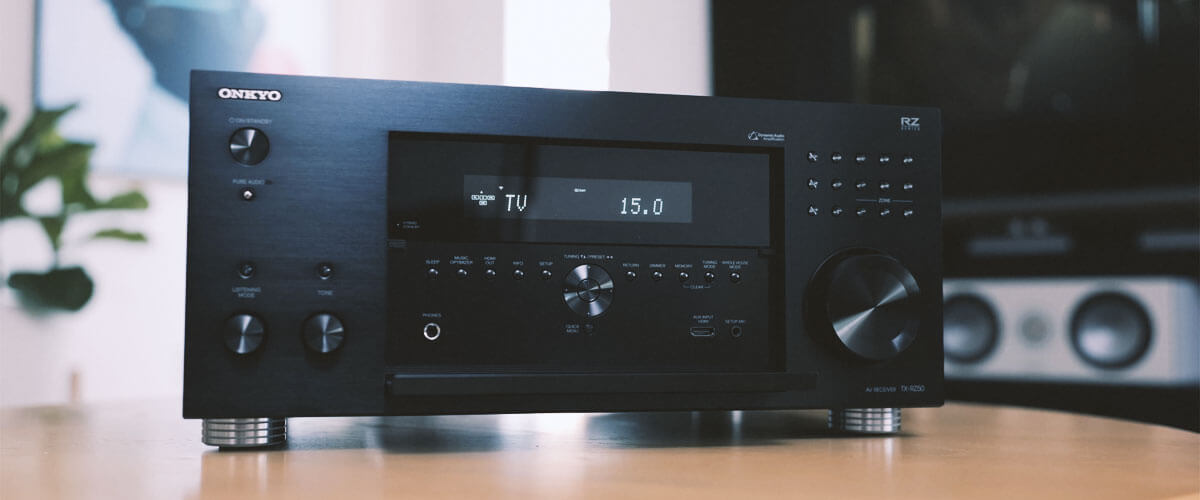
In testing, the Marantz CINEMA 50 and Onkyo TX-RZ50 proved amazing, fabulous, and magical. And without detracting from the merits and quality of Onkyo, I will still say that Marantz seemed to me more universal, as it shone equally excellent in surround sound, stereo, and vinyl.
Marantz CINEMA 50 key specs
- Channels: 9.4.
- Power output: 110W/8 Ohm, 150W/6 Ohm.
- HDMI inputs/outputs: 6/3.
- Video functions: 8K/60Hz, 4K/120Hz pass-through, 1080P/4K to 8K HDMI upscaling.
- Bluetooth/Wi-Fi: yes/yes.
- Streaming services: AirPlay2, TuneIn, Spotify, Pandora, SiriusXM, Amazon Music HD, TIDAL, Deezer, iHeart Radio, Napster, SoundCloud, Mood Mix.
- Supports: HDMI ARC, HDMI eARC, HDMI CEC, HDCP2.3, HDR10, HDR10+, HLG, Dynamic HDR, Dolby Vision.
- Surround sound: DTS HD Master, DTS:X, DTS Neural:X, DTS Virtual:X, Dolby TrueHD, Dolby Atmos, Dolby Atmos Height Virtualization, Dolby Atmos Music, Dolby Surround, IMAX Enhanced, Auro-3D.
Onkyo TX-RZ50 key specs
- Channels: 9.2.
- Power output: 120W/8 Ohm, 250W/6 Ohm.
- HDMI inputs/outputs: 7/2.
- Video functions: 8K/60Hz, 4K/120Hz, 4K/60Hz pass-through, video upconversion (up to 1080p and 8K) for analog and HDMI sources.
- Bluetooth/Wi-Fi: yes/yes.
- Streaming services: AirPlay2, Deezer, Tidal, Pandora, Spotify, Amazon Music HD, TuneIn.
- Supports: HDMI ARC, HDMI eARC, HDMI CEC, HDCP2.3, HDR10, HDR10+, Dolby Vision.
- Surround sound: DTS HD Master, DTS Neural:X, Dolby TrueHD, Dolby Surround, Dolby Digital Plus, Dolby Atmos Height Virtualization, Dolby Atmos, IMAX Enhanced.
Marantz CINEMA 50
Onkyo TX-RZ50
Budget Marantz and Onkyo AVRs comparison
Marantz NR1510 vs Onkyo TX-SR494
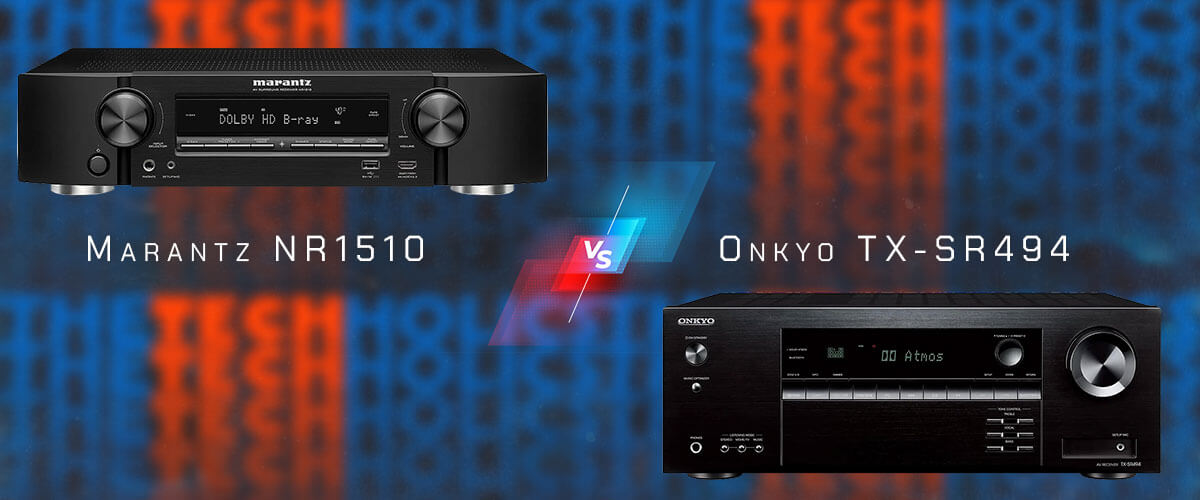
The second pair is in the budget segment, with a small price difference but big feature differences. To start with, Marantz NR1510 is a 5.2-channel receiver with 50W power, and Onkyo TX-SR494 offers 7.2 channels with 80W power (at a lower price).
It’s not hard to guess that the TX-SR494 is Dolby Atmos, DTS:X capable and can broadcast audio to 2 zones, while the NR1510 offers only basic surround sound. Still, in the absence of an advanced version of auto-calibration, I didn’t like the system that Onkyo has built-in and spent quite a while fiddling with the manual settings.
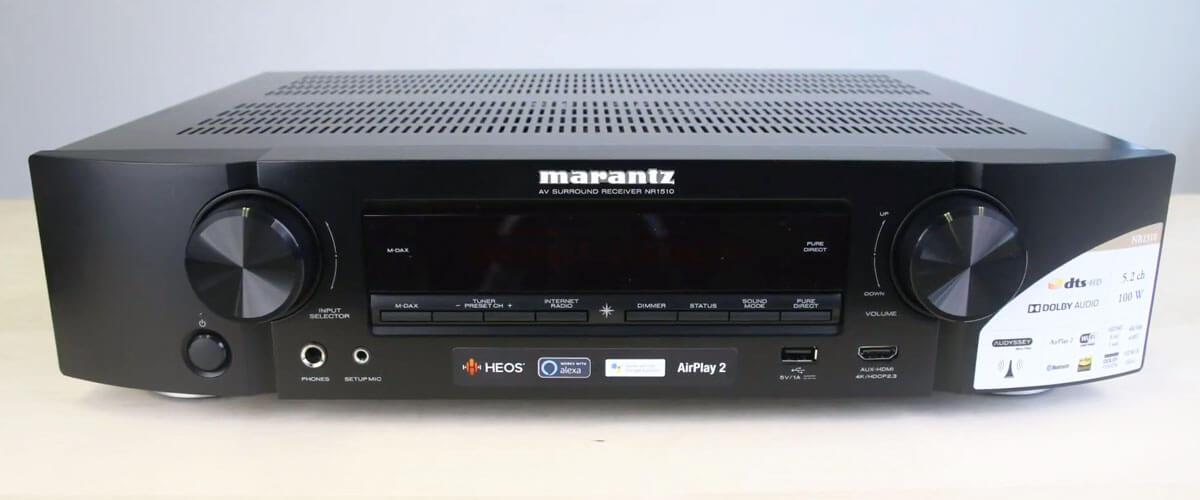
But don’t jump to conclusions. If you’re not interested in the Dolby Atmos, perhaps you’ll appreciate the Marantz “chips”. For example, unlike the Onkyo, it has built-in Wi-Fi and is equipped with HEOS and AirPlay 2 to broadcast audio wirelessly to multiple rooms. It works with Alexa’s voice assistant and can be controlled from iOS and Android devices. Further, the NR1510 supports Higher Resolution Music Playback via USB (up to 192 kHz).
Also, the Marantz is thin-profile, but it also has more connectors! There are 3 more HDMI ports than the Onkyo, although they are similar in video streaming capabilities. The only difference is that the NR1510 doesn’t have upscaling to 4K.
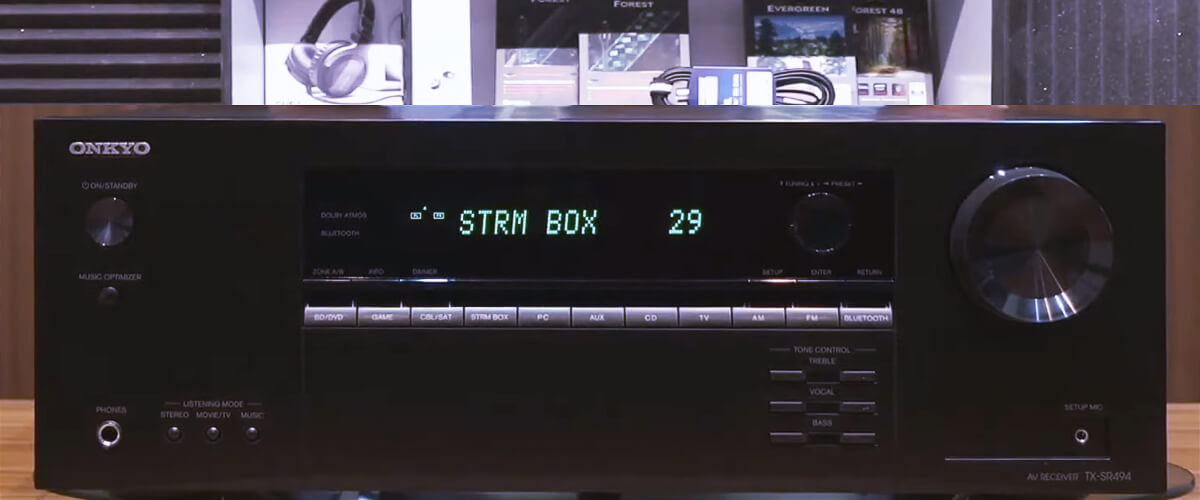
Overall, I would conclude as follows: The Onkyo TX-SR494 is a great budget option for those who love movies and want to know what Dolby Atmos surround sound is all about, and the Marantz NR1510 will suit those looking for a versatile device for watching movies with enhanced sound and listening to music. How about you? Have you already decided for yourself: Marantz or Onkyo? It’s a tough choice.
Marantz NR1510 key specs
- Channels: 5.2.
- Power output: 85W/8 Ohm, 100W/6 Ohm.
- HDMI inputs/outputs: 6/1.
- Video functions: 4K/60Hz pass-through.
- Bluetooth/Wi-Fi: yes/yes.
- Streaming services: AirPlay2, TuneIn, Spotify, Pandora, SiriusXM, Amazon Music HD, TIDAL, Deezer, iHeart Radio, Napster, SoundCloud, Mood Mix.
- Supports: HDMI ARC, HDMI eARC, HDMI CEC, HDCP2.2, HLG, Dolby Vision.
- Surround sound: DTS HD Master, Dolby TrueHD, Dolby TrueHD, Dolby ProLogic II.
Onkyo TX-SR494 key specs
- Channels: 7.2.
- Power output: 80W/8 Ohm, 160W/6 Ohm.
- HDMI inputs/outputs: 4/1.
- Video functions: 4K/60Hz pass-through, 1080p Full HD to 4K Ultra HD upscaling over HDMI.
- Bluetooth/Wi-Fi: yes/no.
- Streaming services: has not.
- Supports: HDMI ARC, HDCP2.2, HDR10, Dolby Vision.
- Surround sound: DTS HD Master, DTS Neural:X, DTS:X, Dolby TrueHD, Dolby Surround, Dolby Atmos Height Virtualization, Dolby Atmos.
Marantz NR1510
Onkyo TX-SR494
Stereo Marantz and Onkyo receivers comparison
Marantz NR1200 vs Onkyo TX-8220
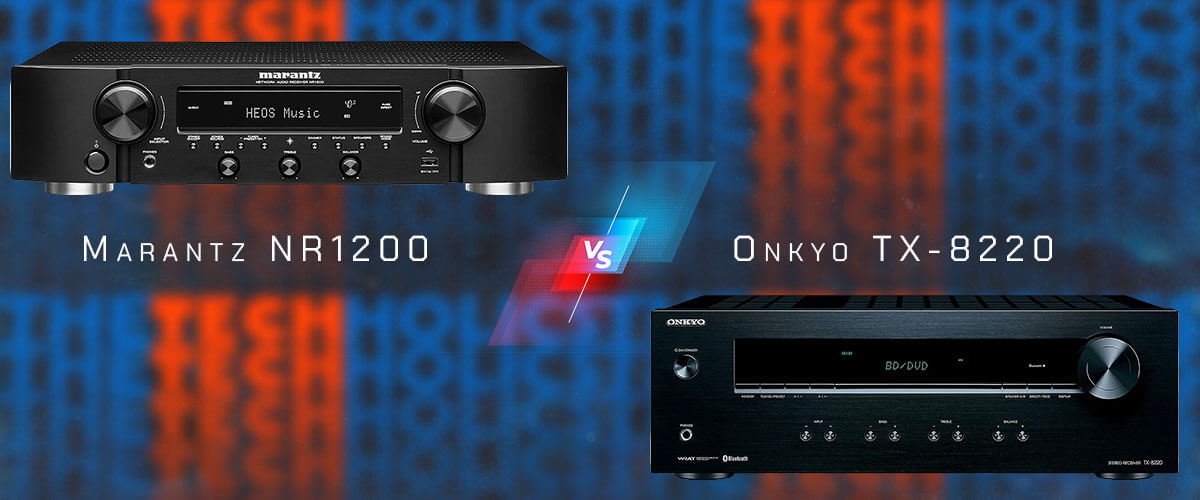
And a couple of stereo receivers conclude my Onkyo versus Marantz battle. In fact, everything is simple here because the Marantz NR1200 is “younger” (2019) and more expensive, and the Onkyo TX-8220 is an outdated model (released in 2017) and costs a trifle. Still, both 2-channel receivers deserve our attention.
The NR1200 is a next-generation stereo receiver. It has 5/1 HDMI inputs, allowing you to hear movies better and watch them at 4K resolution. At the same time, the TX-8220 is a simple 2 channel amplifier with no video options.
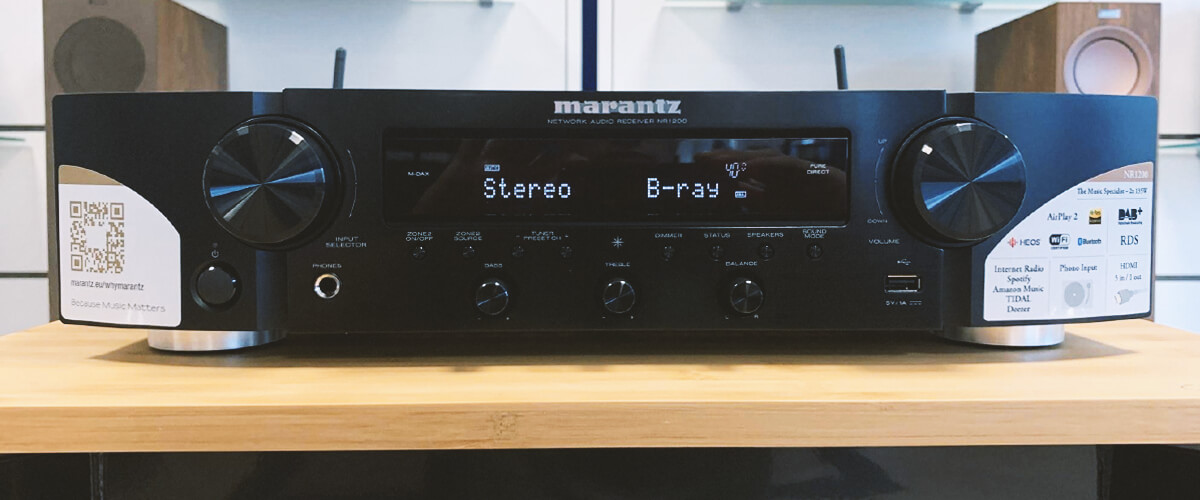
With Marantz, you have built-in Wi-Fi, AirPlay 2, a HEOS multi-room system, support for voice assistants, and streaming services. And with the Onkyo, only Bluetooth version 4.1 and radio.
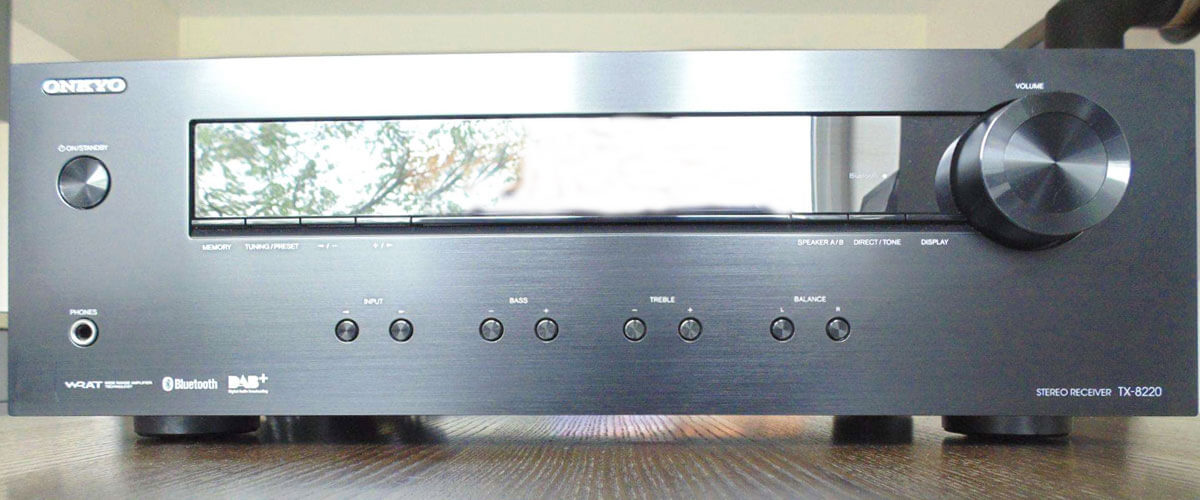
It’s not hard to guess that the choice of modern people living in their smartphone will fall on Marantz NR1200. It’s a simple but versatile stereo receiver with 75W power for home use. The Onkyo TX-8220 will suit those who simply want an inexpensive 45W amplifier for their CD, BD/DVD players, or vinyl player.
Marantz NR1200 key specs
- Channels: 2.2.
- Power output: 75W/8 Ohm, 100W/6 Ohm.
- HDMI inputs/outputs: 5/1.
- Video functions: 4K/60Hz pass-through.
- Bluetooth/Wi-Fi: yes/yes.
- Streaming services: AirPlay2, TuneIn, Spotify, Pandora, SiriusXM, Amazon Music HD, TIDAL, Deezer, iHeart Radio, Napster, SoundCloud, Mood Mix.
- Supports: HDMI ARC, HDMI CEC, HDCP2.3, HDR10, HLG.
- Surround sound: has not.
Onkyo TX-8220 key specs
- Channels: 2.1.
- Power output: 140W/3 Ohms, 120W/4 Ohms, 80W/8 Ohms.
- HDMI inputs/outputs: 4/1.
- Video functions: N/A.
- Bluetooth/Wi-Fi: yes/no.
- Streaming services: has not.
- Surround sound: has not.
Marantz NR1200
Onkyo TX-8220
FAQ
Which brand is more durable and reliable in the long run?
How do the two brands fare regarding user-friendliness and ease of setup?
Can I integrate both Marantz and Onkyo receivers into a multi-room audio setup?
We are supported by our audience. When you purchase through links on our site, we may earn an affiliate commission at no extra cost to you.
Our newsletter
* We will never send you spam or share your email with third parties

![Best Budget Receivers [Reviewed and Tested]](https://thetechholics.com/wp-content/uploads/2023/10/best-budget-av-receiver-300x150.jpg)
![Best 9-Channels AV Receivers [Reviewed and Tested]](https://thetechholics.com/wp-content/uploads/2023/10/best-9-2-receiver-300x150.jpg)

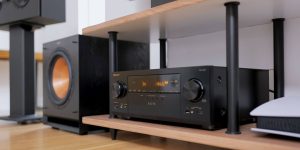
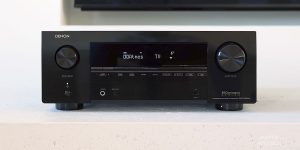
![Pioneer vs Denon Receivers [Top Models Compared and Tested]](https://thetechholics.com/wp-content/uploads/2023/10/denon-vs-pioneer-review-300x150.jpg)
